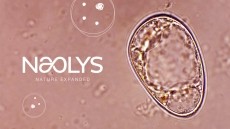P&G claims anti-aging regime is as good as prescription alternative
According to the company, after 6 months the Olay Pro-X range is as effective as the prescription treatment in reducing the appearance of fine lines and wrinkles with fewer negative side effects on the skin.
Olay performs better after 2 months
In a study recently published in the British Journal of Dermatology, the daily use of three Olay Pro-X products was tested against a tretinoin 0.02 percent treatment, by two groups of nearly 100 women for 2 months, before the study was extended to 6 months with smaller cohorts.
After a two week washout period where the participants in both groups were told to follow a strict cosmetic regime, using only an Olay face wash and moisturising lotion, the two groups followed either the Olay regime or the tretinoin treatment.
Those following the Olay Pro-X regime used the SPF 30 containing Pro-X Repair moisturising cream in the morning and the Pro-X Wrinkle Smoothing Cream in the evening, with additional use of the Pro-X Deep Wrinkle Treatment twice a day.
All three products contain niacinamide and peptides, accompanied in the SPF 30 products with antioxidants, in the night cream with moisturizing factors and in the wrinkle cream with retinyl propionate.
The tretinoin group used an SPF 30 sun care product daily, as well as the tretinoin 0.02 percent every other day for two weeks and then every day for the last 6 weeks.
According to one of the study’s authors and dermatologist Dr Jan Fu, this helps patients adjust to any potential irritation the tretinoin might cause.
“In summary, the dosing regimen chosen reflects the way in which the products are recommended to be used,” principal scientist at P&G beauty and grooming Joe Kaczvinsky told CosmeticsDesign.com USA.
At the end of the 8 week period, the appearance of facial fine lines was assessed by experts (blind to the treatment regime followed) who compared visual images of the face at the start of the study, to those taken after two months.
According to the study results, after two months a significantly higher percentage of those in the Olay group (58 percent) were judged to look better than in the tretinoin group (41 percent).
Similar efficacy after 6 months
In order to investigate the action of the products over the long term, two cohorts of 25 women continued following the regimes for a further 4 months.
Although, participants were enrolled on a first come, first serve basis before the trial start date - giving little room for sampling error - the experiences of the cohorts did not reflect those of the larger populations.
After the 8 week period those in the Olay cohort reported similar, rather than greater, improvements to those in the tretinoin cohort.
“If anything, this put Olay Professional Pro-X at a disadvantage since the Pro-X cohort responded worse on average than the full population and the tretinoin cohort responded better on average than the full population,” Kaczvinsky said.
At the end of the 6 month period, the appearance of fine lines and wrinkles had continued to improve although there were no significant differences between those following the Olay regime and those receiving the tretinoin treatment.
The researchers, led by Kaczvinsky, conclude that the study shows prescription efficacy for improving fine lines can be achieved with a cosmetics regimen as well as being better tolerated by patients.
However, the authors did note that there are a number of limitations to the study, notably the relatively small cohorts used in the longer term study. In addition, there are differences with the products used; Olay’s regime is inherently moisturising, tretinoin is more irritating.
“As the authors noted in the BJD article using larger cohorts could have provided more robust statistics,” said Kaczvinsky.
Source: British Journal of Dermatology
2010, Issue 162, Pages 647 – 654
A randomized, controlled comparative study of the wrinkle reduction benefits of a cosmetic niacinamde/peptide/retinyl propionate products regimen versus a prescription 0.02 percent tretinoin product regimen
J.J.J. Fu, G.G. Hillebrand, P. Raliegh, J. Li, M.J.Marmor, V. Bertucci, P.E. Grimes, S.H. Mandy, M.I. Perez, S.H. Weinkle, J.R. Kaczvinsky












